
Bernard Cohen
Biography
BERNARD COHEN (b 1933)
Bernard Cohen has described himself as "A storyteller and a creator of pictorial theatre." His tensely wrought and unpredictably complex pictures hold a unique position within the canon of contemporary art.
Born in London, where he lives and works, Bernard Cohen studied at the Slade School of Fine Art from 1951-1954. In 1988 he was appointed as Slade Professor and Director of the Slade School of Fine Art, University College, London. Cohen's work came to prominence during the 1960s and has since been exhibited extensively.
Public exhibitions include a retrospective at the Hayward Gallery, London in 1972, which toured to Newcastle and Leeds; Artist in Focus, Six Paintings from the Tate Gallery Collection, Tate, London in 1995; Stroll on! Aspects of British Abstract Art in the Sixties, Mamco, Musée d'Art Moderne et Contemporain, Geneva in 2006; and Abstraction and the Human Figure at CAM's British Art Collection, Calouste Gulbenkian Foundation, Lisbon in 2010. In 2017 Cohen's work was exhibited as a Spotlight exhibition at Tate Britain, with a supporting film It's A Matter of Dancing With Chaos here. In 2018 Cohen featured in Post-Pop at the Gulbenkian Foundation, Lisbon and in Kaleidoscope at the Walker Art Gallery, Liverpool.
Bernard Cohen's work is held in numerous public collections including the British Council, Tate, the Victoria & Albert Museum, and MoMA.
The 1960s
"If a painting may be many paintings, which or where is the actual painting and where is the surface of the picture?" Norbert Lynton in Bernard Cohen: Work of Six Decades (2009)


A predominately monochromatic image, Generation is formatted with two main components, the shadowy white and black background with a long black wavering line ending in a knot. This large canvas is a significant milestone within Cohen's early practice, as it was the first time he applied paint by spraying, creating an overall divided composition of abstraction. The black-outlined shape, reminiscent of an internal organ, is repeated within, coiling around itself when it encounters the folds of the larger encompassing shape.
Exhibited in the Arts Council's touring exhibition of Cohen's work commencing at the Hayward Gallery, London, in 1972, Generation is an archetype for Cohen’s preoccupation with the determining impact of any consequence once taken, and the ripple effect it has on the actions to follow. The black line's trajectory is emblematic of layers of containment and limitation. A muted background creates an ambiguous and asymmetric picture plane, with the reduction of colour to black and white hinting at an association with sonography, the irregular surface both optical and abstract. Its style relies heavily upon the rawness of the material and composition, providing the elements within a substantial freedom, allowing shapes and lines to dominate the painting.
Empire (1962) relies heavily upon a raw field of composition, allowing muted radiant forms to inhabit the image individually and collectively, imbued with their own iconography. Potentially referencing an earlier painting with the same title, named after the classic cinema houses, the geography within the work shows a path of ascendant forms exploring and compounding themselves. During completion of the painting, Cohen reflects that he was interested in the invention of a moment, not wanting to be attached to a specific style, imparting shapes based on visions from a flash in his mind’s eye.
Using line as both a structure and an image, Amaranth (1964) is defined by a cursive, organic form spreading across the lower half of the canvas, with tentacles of green, orange and red adorned with precise multicoloured raised dots. Similar to other works of the period, the painted area is fixed to one edge of the canvas; the remote enclosed community, filled with life, exists within a larger light field. The curved linear expositions, incorporated with clustered movements, connect Cohen’s work between 1962 and 1966 with Art Nouveau, a great interest of the artist's. Cohen's 1965 essay on Art Nouveau reflects on his own practice:
By separating style from function, the Art Nouveau artist gave line, colour and mass the freedom to grow and develop as forces independent of message or utility. He allowed form to travel, melt, contract, spread, destroy itself...The artist played on the similarities between art and nature, but he did so in order to draw attention to his own qualities, and not those of nature...
In the later 1960s Cohen strived even further to position his painting within a substantially-concentrated area of the canvas, creating compositions with one point of focus. Placed within an indeterminate environment of predominantly white space are irregularly-shaped condensed nuclei of colour, contrasting the foundation of the picture plane with concise, organic tangles of disparate forms. Cohen continued to produce ‘white’ paintings until 1970. It was important for him to methodically establish layers of paint to create a surface and succession of events recognisable through a shape's configuration. Within the compressed area, Cohen both manufactures and dismantles a form, disconnecting it from traditional techniques of painting.
The 1970s
"The first morning I was there I drove out into the desert and I discovered that what was happening on my left side had no logical visual relationship with what was happening on my right-hand side. If you look at Rubens, it's like the countryside in Europe. The tree goes into the cloud, which goes into a flying bird, which goes into another tree on the other side, which goes into a river, which comes out the bottom of the painting. But in New Mexico there was no connection from one side to the other, in terms of space, light and imagery. If I turned my head, I entered a different world. This experience showed me the kind of space that had existed in my mind. "
In an interview with James Faure Walker in 1977, Cohen reflects that European painters, such as Duccio, Rembrandt and Vermeer were particularly important influences to him, but stressed that his first trip to New Mexico in 1969 was a milestone experience. From that visit Cohen began "to work on six or seven at a time", telling multiple narratives on one canvas in a kind of collage, embodied by Territory (1977), with a canvas interwoven of colour, motifs, movements and markings, collating multiple layers of time and place.
The 1990s
Both A Very Large Array (1994) and Moving Away (1992) were made during a period when Cohen produced erratically woven maps, representing the disorder of the world, embodying multiple times, entities and places in a system of intricate passages. Reflecting on the movement of people in vehicles including cars and airplanes, the compositions entice the viewer to move as well, with one's vision bolting across the canvas to follow unstoppable lines and pathways.
While Cohen was a student at the Slade School in London, he would attend the lectures of art historian Rudolf Wittkower (1901-1971), ‘who was preoccupied with how crossings in a culture create the culture.’ Cohen had traversed various places including the Atlantic and North America, studying indigenous culture in New Mexico. His mediation of interlaced structures was enlightened by an awareness of remarkable routes of geographic exchange, further defined with tracks of overlappings, tacking and swirling. Cohen also invokes the action of conscious beings repositioning compounded visual material from world, earth and space as indicated in A Very Large Array, whose title was taken from a monumental radio telescope in New Mexico searching for extra-terrestrial life.
The early 2000s
"...we become lost to a multiplicity of intricately overlaid and inetersecting planes, dots, lines and colours, each competing for our attention. In the sensory overload of the moment that we first encounter a Bernard Cohen painting, time shifts, becomes elastic as it were, as we grasp a simultaneous multiplicity of spatio-temporal possibilities" - Ian McKay in Bernard Cohen: About Now (2015)

Swarm II (2004) is a reflection on the past, with Cohen stating, ‘so much of what I’m about is memories, processing it all, pulling it all together...it’s the view from the bomb aimer’s window of a heavy bomber.’ From September 1939 through March 1945, air raid sirens sounded across Cohen's home city of London more than a thousand times. As with other works from the early 2000s that reflect on events of war and terror, this painting indicates that the war deeply affected Cohen’s psyche, continuously impacting his works. Constructed from rigid cubic shapes, with influences of architectural structures as hundreds of yellow planes intersect and encase the composition, the centre of the painting includes a vortex-like octagon, surrounded by circles as lines emanate to the edges, hinting this is only a fragment of a seemingly-infinite scene.
Exhibitions
News

London Original Print Week 2021
Shop








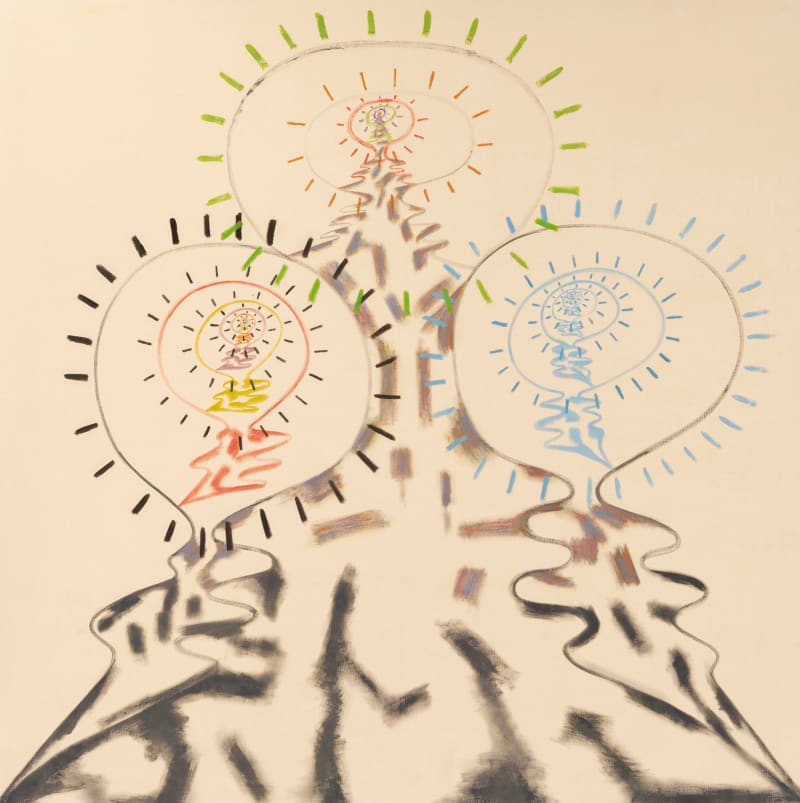

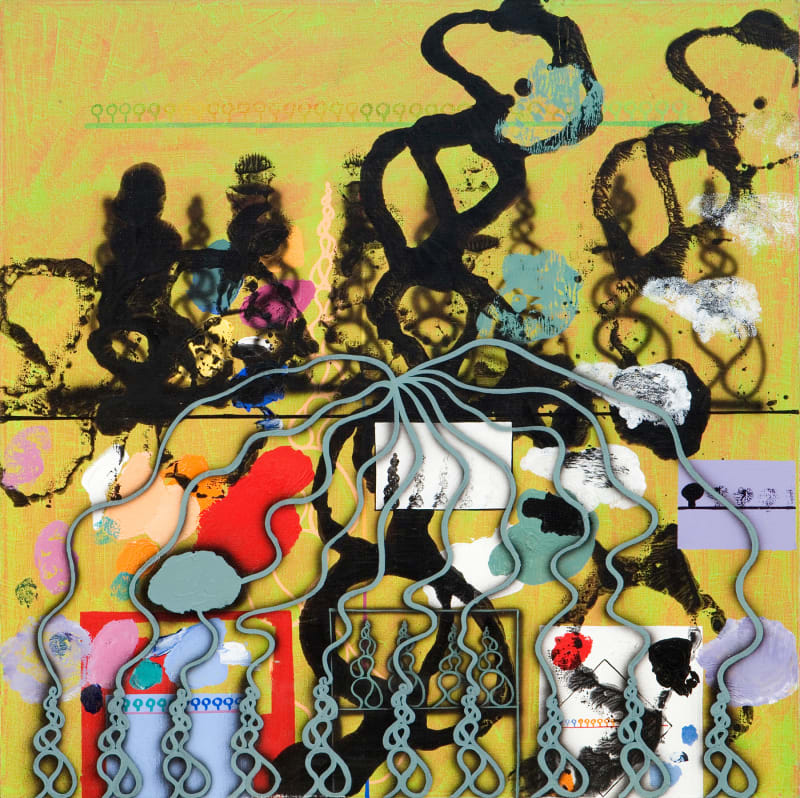

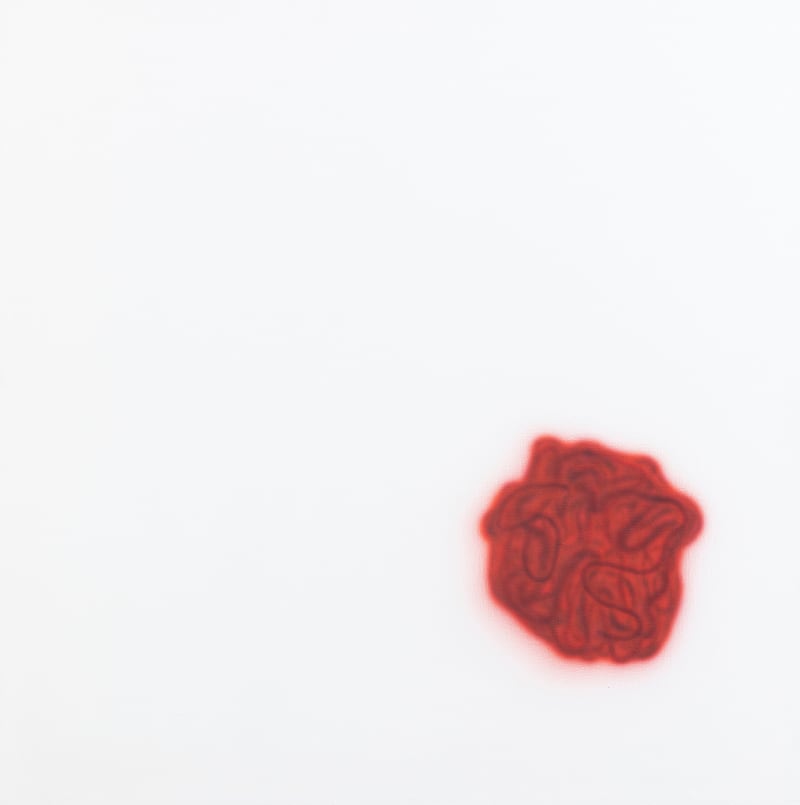



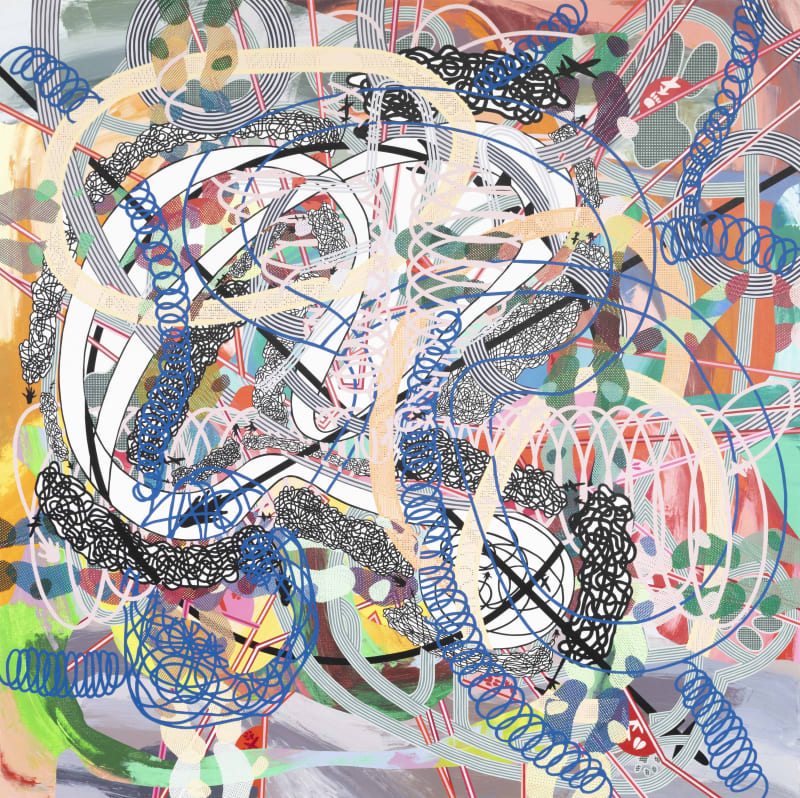
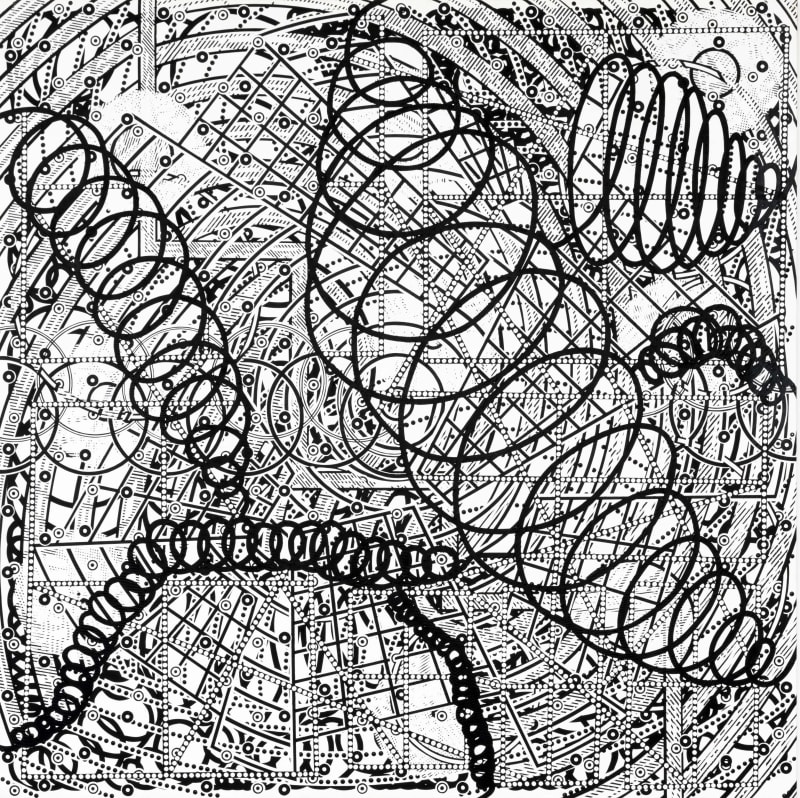

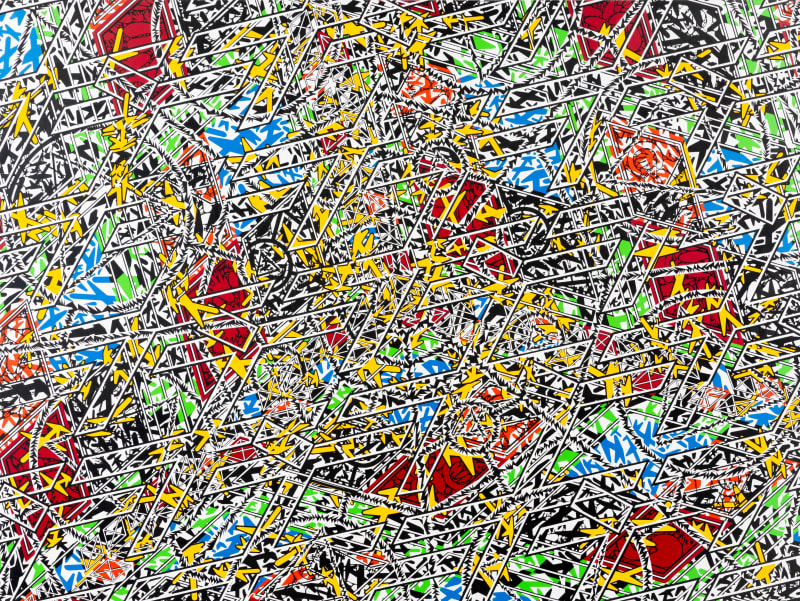



![[GREYSCALE] 16 February - 11 March 2023](https://artlogic-res.cloudinary.com/w_800,h_800,c_limit,f_auto,fl_lossy,q_auto:good,a_0/ws-flowers/usr/images/exhibitions/main_image_override/items/89/89e6b389f3c1461c8ea97458d2e8fad3/afg-59068-image-1-.jpg)






































